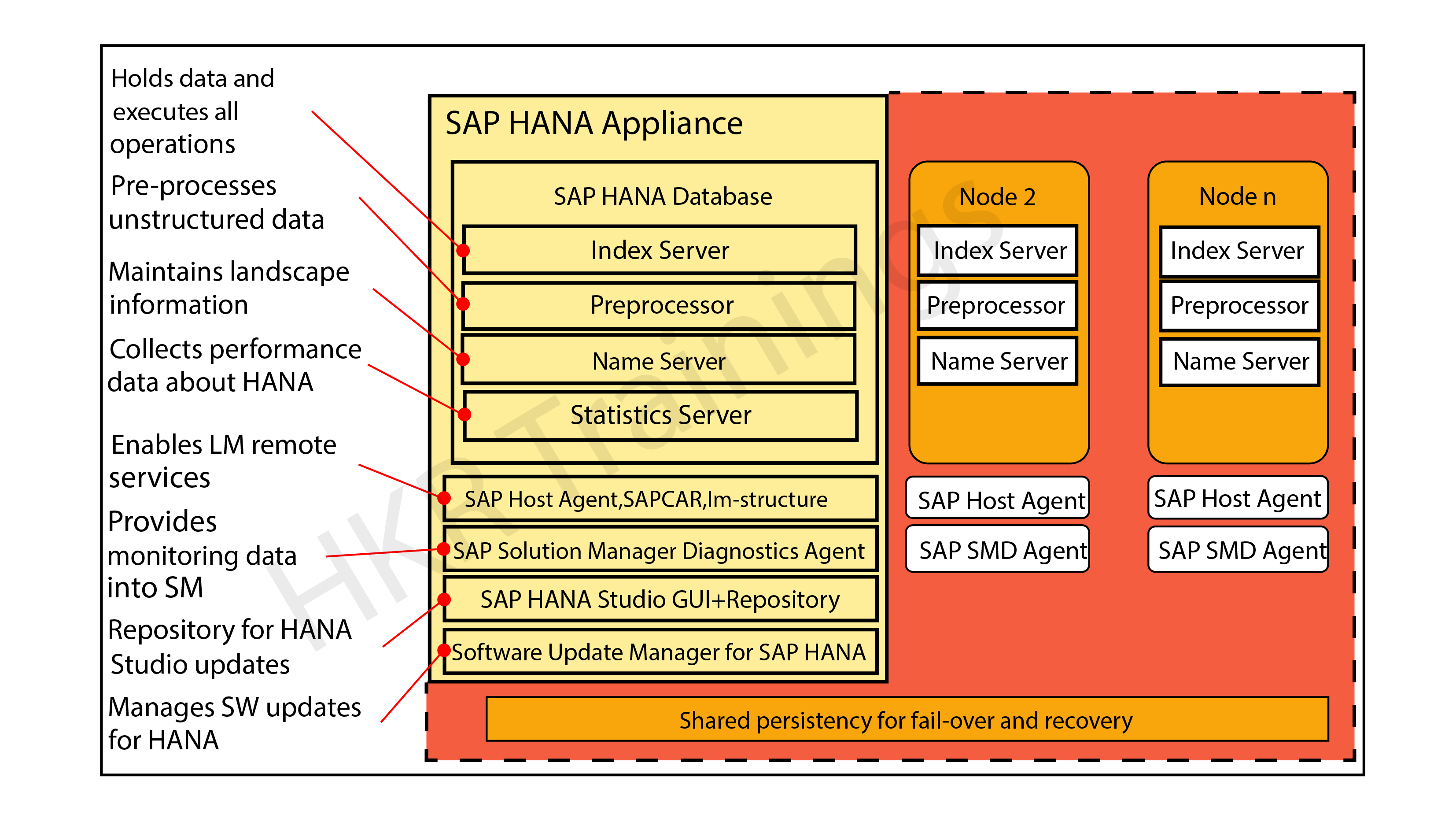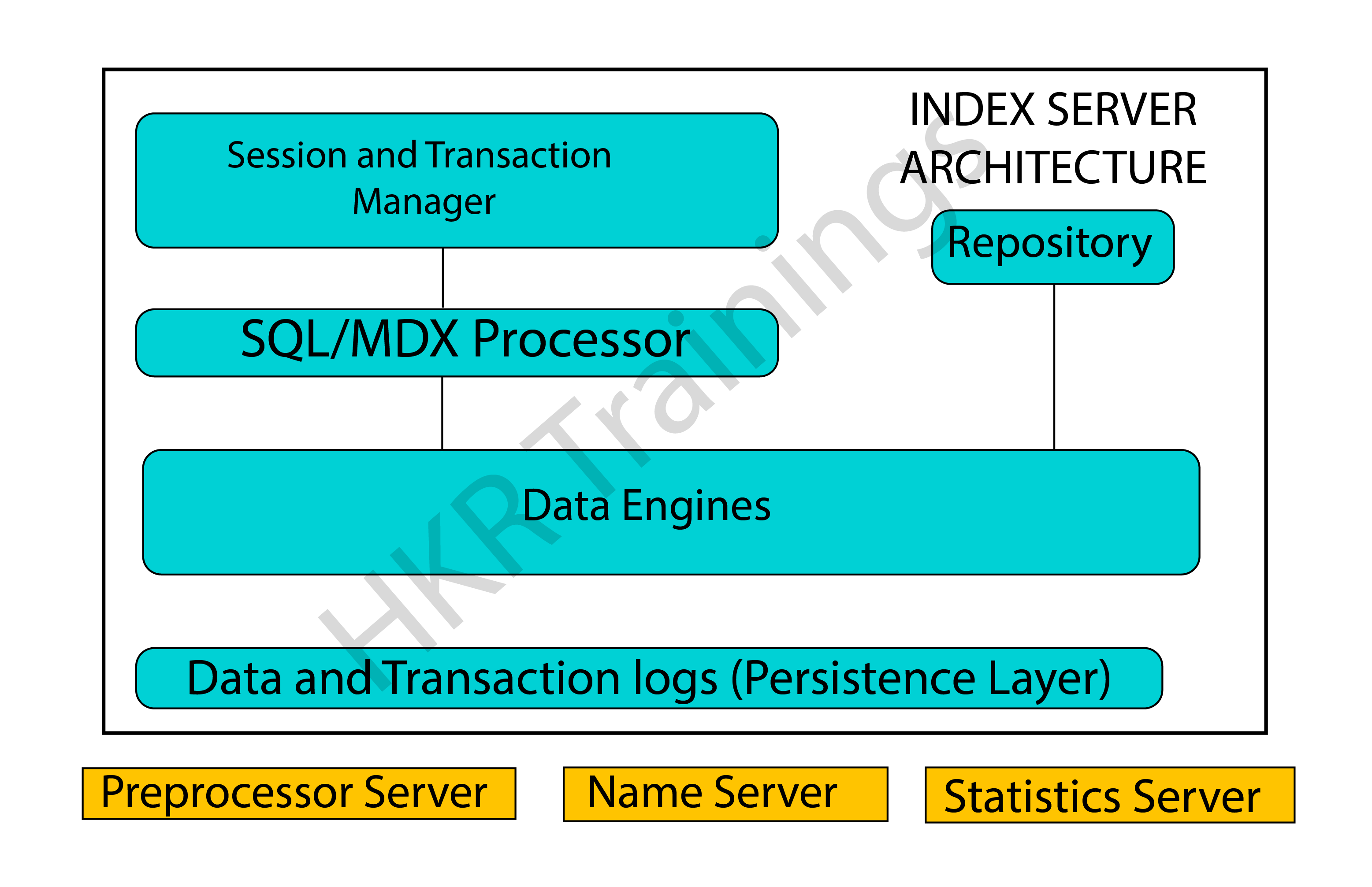Blog Name - Table of Content
- A Brief Introduction to The SAP HANA
- SAP HANA – Core Architecture
- Why SAP HANA is so popular?
- Key benefits of the SAP HANA:
- Differences between SAP and SAP HANA
- Different types of SAP HANA system monitors
- Final words
A Brief Introduction to The SAP HANA:
SAP HANA is in-memory management, data-oriented, and relational development management system developed and produced by SAP SE enterprise corporation. The primary function of SAP HANA is to manage database applications, store, and retrieve the data as requested by the enterprises. SAP HANA stands for “High-performance analytic appliances” and is a combination of both hardware and software appliances. This module is a data foundation technology that offers advanced-level data analytical and multi-dimensional management data-driven applications. SAP HANA product written in JAVA, and C programming languages.
Become a SAP Hana Certified professional by learning this HKR SAP Hana Training
SAP HANA – Core Architecture
The below diagram explains the core components and work nature of the SAP HANA module:

As we already know, the SAP HANA platform is developed with the help of C and JAVA programming languages and designed to run on operations systems like LINUX server enterprise edition 11. Sap HANA consists of multiple components that help to perform many activities. The most important component of SAP HANA architecture is an Index server which consists of an SQL/ MDX processor to handle any type of query statement. The SAP HANA system contains different servers like name servers, statistics servers, XS engines, and preprocessor servers. All these servers are used to communicate and host multiple web applications.
Let’s know the core components one by one:
Index server:
The index server is an important component of SAP HANA architecture. This server is also known as the heart of the SAP HANA database system. An index server contains the original data and engines to process the data. This type of server takes care of the entire data request and processes them when they are mixed with SQL and MDX. The index server also consists of a data engine to handle all the query statements (SQL/MDX). This also holds a persistent layer used to check the durability of the HANA system and restore the data.
This figure illustrates the overall architecture of the Index server:

In the above diagram, you can see Index server also consists of a session and transaction manager, this is used to manage transactions and keep tracking of them.
SQL/MDX Processor:
The SQL/MDX processor type is responsible for processing the SQL/MDX data transactions with data engines to run different queries. It requests all the segments to correct the engine for performance optimization. In this processor type, data authorization also handles all types of errors. MDX or multi-dimensional expression is a query language used in OLAP systems like sequential query language and relational database management systems. The planning engine is responsible to run the planning operations within the database. The calculation engine converts the data into calculation models to build logical data execution. The stored processor executes the procedure call to optimize data processing. The persistent layer is also responsible to check durability and atomicity in SAP HANA systems and also manages the data and transaction logs to manage data backup, HANA system configuration, and log backups.
Preprocessor: This component of the SAP HANA architecture enables users to preprocess the data.
Name server: This SAP HANA component allows users to maintain landscape information.
Statistics server: This SAP HANA component collects information about the SAP HANA server.
Check It the Sample Resume SAP HANA SAMPLE RESUME!
Why SAP HANA is so popular?
The following are the important features of SAP HANA that make the technology so popular in the current business platform:
1. SAP HANA acts as an eclipse editor and web-based editor (also known as pick-up and drop services) to support the graphical creation of business applications.
2. Provides Source agnostic data access and integration services that allow accessing and indexing external data from across the entire organization. Add these analytical services to existing analytical models.
3. Real-time data analytical processing can be performed to analyze business operations in real-time using the huge volume of detailed information while business happening.
4. Data can be accumulated from many applications and data sources without disturbing in any way that continuing business operation.
5. View of business information can be carried on in a persistent data repository and built again in case of a crash.
Key benefits of the SAP HANA:
After knowing all the major factors and core architecture of the SAP HANA, now it is time to have a basic idea of the key benefits of the tool. It is necessary to know the importance of the platform before relying on implementation.
Below are the few advantages of SAP HANA:
1. Offers in-memory management: this type of in-memory allows for sophisticated data calculations.2. Acts as calculation engine: In-memory processing gives more time for relatively slow updates to column data.
3. Provides massively parallel processing: MPP optimized software enables linear performance scaling making sophisticated calculations like allocations possible.
4. Larger storage: The columnar storage increases the amount of data that can be stored in limited memory (compared to disk).
5. Row +Column database: Column databases enable easier parallelization of queries. And Row database provides fast transactional processing.
SAP HANA Tutorials for beginners get started with your SAP carrier

Subscribe to our YouTube channel to get new updates..!
Differences between SAP and SAP HANA:
We think that before getting into the SAP HANA, it is mandatory to know the standard differences between the SAP and SAP HANA. Let us know them one by one:
SAP:
1. SAP is a traditional ECC business enterprise application.
2. In SAP, nearly all the SAP transaction codes are available and there is no concept of data simplification.
3. it’s easy to access all the functional modules of SAP and helps you to create real-time data reporting.
4. Also offers additional performance and the SAP solution also boasts amended transactions.
5. Upgrade to ECC6 enhancement package 7 and then perform a database management activity.
SAP HANA:
1. Helps to rebuilt to capitalize the significant simplification that the SAP HANA platform provides.
2. This is a packaged solution that has SAP ERP at its core optimized to run on the HANA platform.
3. Helps to integrate and leverage various solutions and technologies in SAP arsenal.
4. Achieve data simplification. This is achieved by replacing the core tables within certain processes with a single table.
5. SAP HANA is designed with SAP flori for a richer user experience and is easily configurable on cloud technology.
Different types of SAP HANA system monitors:
The SAP HANA system monitors are used to control various tasks like Log disks, Data Disks, trace disks, and alerts on resource usage.
Let me explain them one by one:
1. System ID: this helps in the ID assigned to the system when added to the studio environment.
2. Operational state: maintains the overall system status.
3. Alerts: This monitor is used to check the system issue alerts when resource usage and thresholds are violated. In general, these alerts are categorized into low, medium, or high priority.
4. Data Disks in (GB): this indicates the size of the data volume available on disk.
5. Log disks in (GB): this indicates the size of the log volume on the disk.
6. Database Resident Memory management: this indicates the size of the memory used in an operating system to manage SAP HANA database processes.
7. Used memory: Here is the amount of physical memory that is used by the SAP HANA database.
8. CPU in (%): This helps to know the percentage of CPU that has been used by the SAP HANA database.
9. Hostname: it indicates the name of the server hosting used in the SAP HANA database.
10. Instance Number: here the Instance number is the administrative unit that consists of the various server software components.
11. System trace disk in GB: it gives the total disk space used on the disk that contains trace files.
12. System physical memory in GB: this gives the total amount of physical memory used.
13. Distributed: this indicates whether the system is running on any single web host or this will be distributed in the system.
14. Start time first: this indicates when the time that first started and value is restarted for any important reason.
15. Versions: this indicates the software versions of the SAP HANA environment studio.
16. Platform: this indicates the different operating systems where the SAP HANA studio is running.
17. Number of crash dump files: here is the number of crash dump files removed in the SAP HANA system.
Top 30 Frequently asked SAP HANA Interview Questions
Final words:
SAP ERP market is booming like a rocket and it is a good career choice to pursue your IT profession latest Gartner report. The real reason behind developing this SAP HANA architecture is to get some knowledge concerning workflow and design factors. Reading this post has given our readers a complete idea to learn and explore concepts like Key benefits, reasons for SAP HANA's popularity, differences between SAP and SAP HANA, and the architecture components.
Related Articles:
About Author
Kavya works for HKR Trainings institute as a technical writer with diverse experience in many kinds of technology-related content development. She holds a graduate education in the Computer science and Engineering stream. She has cultivated strong technical skills from reading tech blogs and also doing a lot of research related to content. She manages to write great content in many fields like Programming & Frameworks, Enterprise Integration, Web Development, SAP, and Business Process Management (BPM). Connect her on LinkedIn and Twitter.
Upcoming SAP Hana Training Certification Online classes
| Batch starts on 10th Jan 2026 |
|
||
| Batch starts on 14th Jan 2026 |
|
||
| Batch starts on 18th Jan 2026 |
|


